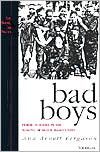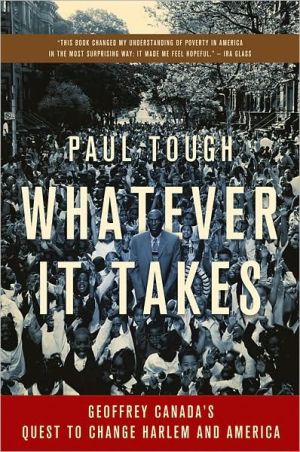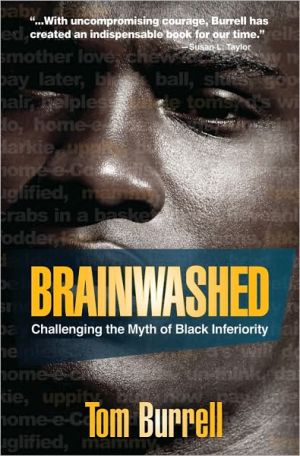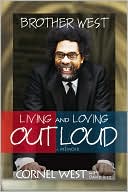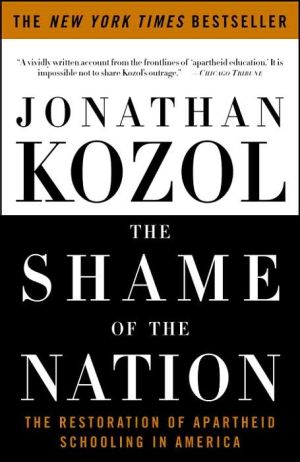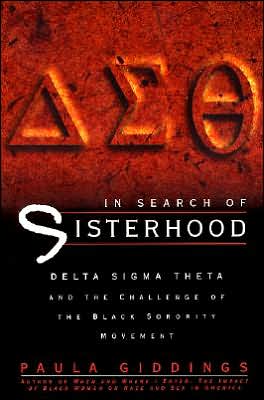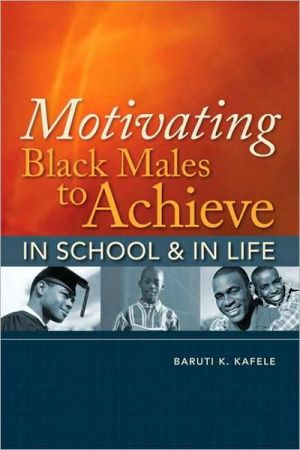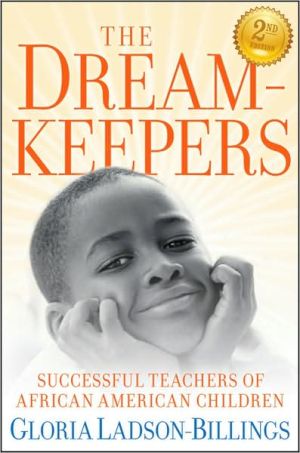Bad Boys: Public Schools in the Making of Black Masculinity
How does it Feel to be Labeled "Unsalvageable" By Your Teacher? Black males are disproportionately "in trouble" and suspended from the nation's school systems. In Bad Boys. Ann Arnett Ferguson offers a richly textured account of daily interactions between teachers and students to illuminate this serious problem. She demonstrates how a group of eleven- and twelve-year-old males construct a sense of self under adverse circumstances.
Search in google:
How do schools identify African American males as "bad boys"?
Bad Boys: Public Schools in the Making of Black Masculinity\ \ By Ann Arnett Ferguson \ University of Michigan Press\ Copyright © 2000 Ann Arnett Ferguson\ All right reserved.\ ISBN: 0472088491 \ \ \ chapter one - don't believe the hype \ \ \ The minute they see me, fear me\ \ I'm the epitome--a public enemy\ \ Used, abused, without clues\ \ I refused to blow a fuse\ \ They even had it on the news\ \ Don't believe the hype\ \ Don't believe the hype.\ \ --public enemy, "don't believe the hype"\ Soon after I began fieldwork at Rosa Parks Elementary School, one of the adults, an African American man, pointed to a black boy who walked by us in the hallway. "That one has a jail-cell with his name on it," he told me. We were looking at a ten-year-old, barely four feet tall, whose frail body was shrouded in baggy pants and a hooded sweatshirt. The boy, Lamar, passed with the careful tread of someone who was in no hurry to get where he was going. He was on his way to the Punishing Room of the school. As he glanced quickly toward and then away from us, the image of the figure of Tupac Shakur on the poster advertising the movie Juice flashed into my mind. I suppose it was the combination of the hooded sweatshirt, the guarded expression in his eyes, and what my companion had just said that reminded me of the face on the film poster that stared at me from billboards and sidings all over town. \ \ I was shocked that judgment and sentence had been passed on this child so matter-of-factly by a member of the school staff. But by the end of the school year, I had begun to suspect that a prison cell might indeed have a place in Lamar's future. What I observed at Rosa Parks during more than three years of fieldwork in the school, heard from the boy himself, from his teachers, from his mother, made it clear that just as children were tracked into futures as doctors, scientists, engineers, word processors, and fast-food workers, there were also tracks for some children, predominantly African American and male, that led to prison. This book tells the story of the making of these bad boys, not by members of the criminal justice system on street corners, or in shopping malls, or video arcades, but in and by school, through punishment. It is an account of the power of institutions to create, shape, and regulate social identities.\ \ Unfortunately, Lamar's journey is not an isolated event, but traces a disturbing pattern of African American male footsteps out of classrooms, down hallways, and into disciplinary spaces throughout the school day in contemporary America. Though African American boys made up only one-quarter of the student body at Rosa Parks, they accounted for nearly half the number of students sent to the Punishing Room for major and minor misdeeds in 1991-92. Three-quarters of those suspended that year were boys, and, of those, four-fifths were African American. In the course of my study it became clear that school labeling practices and the exercise of rules operated as part of a hidden curriculum to marginalize and isolate black male youth in disciplinary spaces and brand them as criminally inclined. \ \ But trouble is not only a site of regulation and stigmatization. Under certain conditions it can also be a powerful occasion for identification and recognition. This study investigates this aspect of punishment through an exploration of the meaning of school rules and the interpretation of trouble from the youth's perspective. What does it mean to hear adults say that you are bound for jail and to understand that the future predicted for you is "doing time" inside prison walls? What does school trouble mean under such deleterious circumstances? How does a ten-year-old black boy fashion a sense of self within this context? Children like Lamar are not just innocent victims of arbitrary acts; like other kids, he probably talks out of turn, argues with teachers, uses profanities, brings contraband to school. However, I will argue, the meaning and consequences of these acts for young black males like himself are different, highly charged with racial and gender significance with scarring effects on adult life chances. \ \ The pattern of punishment that emerges from the Rosa Parks data is not unique. Recent studies in Michigan, Minnesota, California, and Ohio reveal a similar pattern. In the public schools of Oakland, California, for example, suspensions disproportionately involved African American males, while in Michigan schools, where corporal punishment is still permitted, blacks were more than five times more likely to be hit by school adults than were whites. In the Cincinnati schools, black students were twice as likely to end up in the in-house suspension room--popularly known as the "dungeon"--and an overwhelming proportion of them were male. In an ominous parallel to Cincinnati's dungeon, disciplinary space at Rosa Parks is designated the "Jailhouse." \ \ The School and Neighborhood\ \ I was initiated to Rosa Parks Elementary School in 1989 as a member of an evaluation team for a new intervention program for children diagnosed as "at-risk" of failing in school. The program, Partners at Learning Skills (PALS), included in-school counseling, after-school tutoring and recreation, evening and weekend workshops for parents, and inservice training for teachers. It was just one of hundreds that had been started in schools and communities throughout the United States in response to the erosion of funding and services to urban public schools that had occurred over the previous decade. \ \ The children participating in PALS had been selected by a committee of teachers, school administrators, and a counselor. I was told that the selection committee had had a very difficult time choosing the first group of thirty children since more than three times that number had been proposed by classroom teachers. One of the most difficult questions facing the selection committee, it was said, was whether to choose pupils who might benefit from extra help or to select those who were, in the words of one of the school administrators, "unsalvageable" and on whom precious resources would be wasted. The selection committee could not agree, so they compromised and included both types. \ \ The first time I saw the entire group of children in PALS, they were in the school library taking a pencil-and-paper test designed to measure self-esteem. That was when I first became aware of a disturbing fact: all the children except one were African American, and of those 90 percent were males. I quickly became aware that what was surprising and problematic for me appeared to be taken for granted by the others. No one at the school seemed surprised that the vast majority of children defined as "at-risk" of failing academically, of being future school dropouts, were mostly black and male. My own puzzle over how this raced and gendered pattern had come into being lead me to conduct an in-depth study through participant observation at the Rosa Parks School over a three-and-a-half year period from January 1990 to May 1993. \ \ Rosa Parks School is the largest of five intermediate schools (grades 4 through 6) in the school district of Arcadia, a medium-sized city on the West Coast. The city is best known as the home of a large public university whose prestige and reputation has attracted students and faculty from all over the world. Arcadia has operated a complex plan for school desegregation since 1968 that involves citywide busing to produce a racial/ethnic and socioeconomic mix in its schools. Students attending Rosa Parks come from a population where race, household type, and annual income are skewed into three types of neighborhood I have called Heartland, Midland, and the Highlands. Each day the buses bring children, the majority of whom are white, from upper-middle-class professional families in the relatively affluent Midland and the wealthy Highlands to Rosa Parks School, where they join the kids from the predominantly low-income African American families living in the Heartland neighborhood surrounding the school. \ \ The racial balance targeted by the Arcadia desegregation program has never been actually attained because of the "white flight" from the public schools that followed the implementation of the desegregation plan in 1968. The percentage of white students in the K-12 grades of the city's schools declined from 60 percent to 30 percent between 1960 and 1993. For a city with a reputation for being one of the most liberal communities in the country, Arcadia has one of the highest percentages of children attending private schools in the region. Many of the white children who attend private or parochial elementary schools eventually return to attend the Arcadia public high school, where classes are de facto segregated as the result of an elaborate tracking system. \ \ At the time of my study approximately one-half of the Rosa Parks student body was black and one-third was white. Of the remaining students, 10 percent were Asian American, 4 percent Hispanic, and 8 percent were classified as Other. The racial composition of the teaching staff, however, had changed little since desegregation, continuing to be predominately white and female.\ \ Rosa Parks School itself is far from being one of the run-down, resource-poor facilities documented in several recent accounts of urban schools. The freshly painted two-story building and the asphalt playground occupies a full city block. Beautiful old pine trees stand on either side of the walkway leading up to a wide stone porch set in front of the main entrance to the school. The building faces onto a grassy lawn that is green for a short time in the spring and brown by the end of the summer when the school year begins. After school, children play football on the grass or hang around on the wide stone porch. \ \ Inside the front door I am always struck by the calm atmosphere. The hallways are wide, clean, and lined by bulletin boards displaying children's work. The classrooms are filled with light from big windows. These are not rooms that speak of the bare necessities. Rooms are adorned with books, plants, animals, computers, games. Even so, teachers reminisce about better times in the school when the availability of basic school supplies could be taken for granted, when there was a school nurse, when the playground was open for recreation in the afternoons. \ \ Nor is the neighborhood in which the school stands dilapidated or run-down. There is a mix of small, neat, single-family dwellings with older rambling wood-frame houses converted into multiple family units. Some are shabby, some are newly renovated. A few 1960s vintage apartment buildings, home to many of the poorest families, are interspersed throughout the neighborhood. \ \ In spite of the quiet, ordinary feeling of its surroundings, Rosa Parks School is located in the heart of a major drug-trafficking area in the city. The buying and selling of drugs, the symbolic presence of urban poverty, is signaled through the signposts on a number of street corners that warn that police are watching and that the car license numbers of people buying drugs are being recorded. The area accounted for ten of the city's fourteen murders; one-half of the reported rapes; about a third of the robberies, and almost a half of the aggravated assaults in the city, according to 1991 statistics from the Arcadia Police Department. \ \ Doing Fieldwork \ \ Statistics about school trouble and punishment provide a map that delineates a raced and gendered pattern of who gets punished in school and present the big picture of a disturbing phenomenon, but they can tell us very little about the actual processes that give rise to this configuration. So, my fieldwork was designed to explore these processes. Through a combination of participant observation at the school and a wide range of interviews and conversations with kids and adults, I examined the beliefs, the social relationships, and the everyday practices that give rise to a pattern in which the kids who are sent to jailhouses and dungeons in school systems across the United States are disproportionately black and male. \ \ As a participant observer, I roamed the hallways before, during, and after school, hung out in the student cafeteria and the teachers' lounge at lunchtime, attended assemblies, wandered around the playground during recess. I sat in on classes and in the school library. I also tutored in the PALS after-school program. \ \ During my second year, I began sitting in on Mrs. Daly's sixth-grade class. I had chosen this room because Horace, the boy who I was tutoring after school, was in the class. The first few visits, I spent most of my time sitting at a worktable, quietly watching what was going on. But very soon, with Mrs. Daly's encouragement, I began participating in the regular classroom activities. I often worked with small groups of kids who needed help. I observed Horace and his friends "in action" and also got to know several of the African American girls in the class who were considered "challenges" and who also spent time in the Punishing Room. I accompanied the group on several field trips, including a three-day camping trip, the sixth-grade picnic at the end of the school year, and the orientation at the junior high school to which some of the kids would be transferring the following year. \ \ \ \ Continues... \ \ \ \ Excerpted from Bad Boys: Public Schools in the Making of Black Masculinity by Ann Arnett Ferguson Copyright © 2000 by Ann Arnett Ferguson. Excerpted by permission.\ All rights reserved. No part of this excerpt may be reproduced or reprinted without permission in writing from the publisher.\ Excerpts are provided by Dial-A-Book Inc. solely for the personal use of visitors to this web site. \ \
AcknowledgmentsixChapter 1Don't believe the hype1Field note: A Field Trip24Chapter 2The punishing room29Field note: First Impressions45Chapter 3School rules49Field note: Self-Description74Chapter 4Naughty by nature77A shift in perspective97Chapter 5The real world101Field note: Mothering134Chapter 6Getting in trouble163Field note: ODD Symptoms195Chapter 7Unreasonable circumstances197Field note: Promotion Exercises225Chapter 8Dreams227Works cited237Index243
